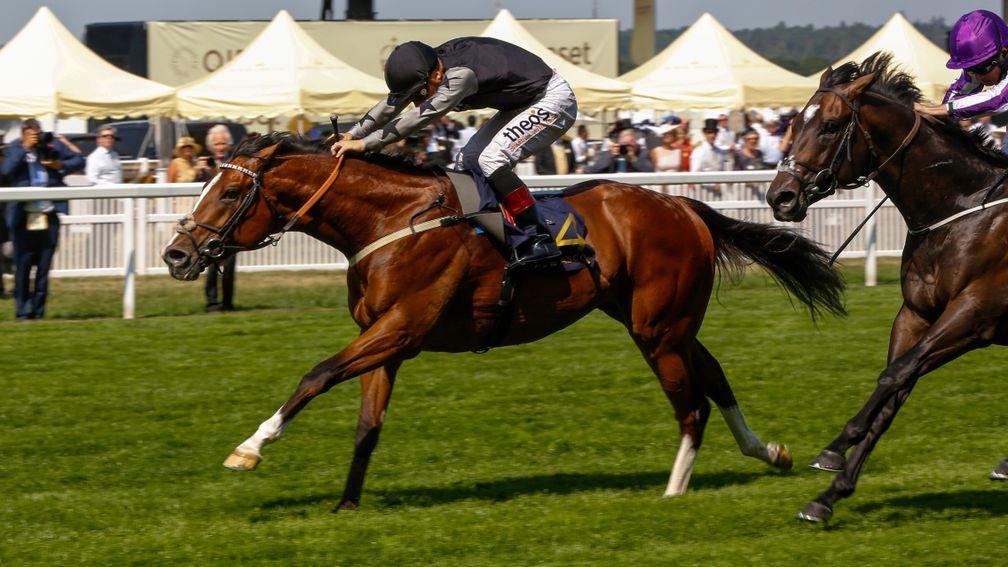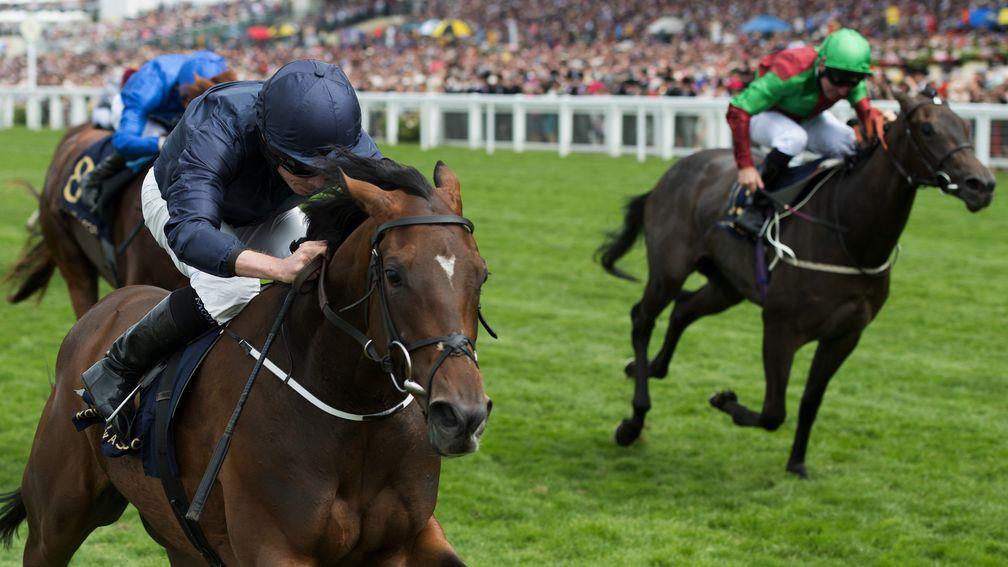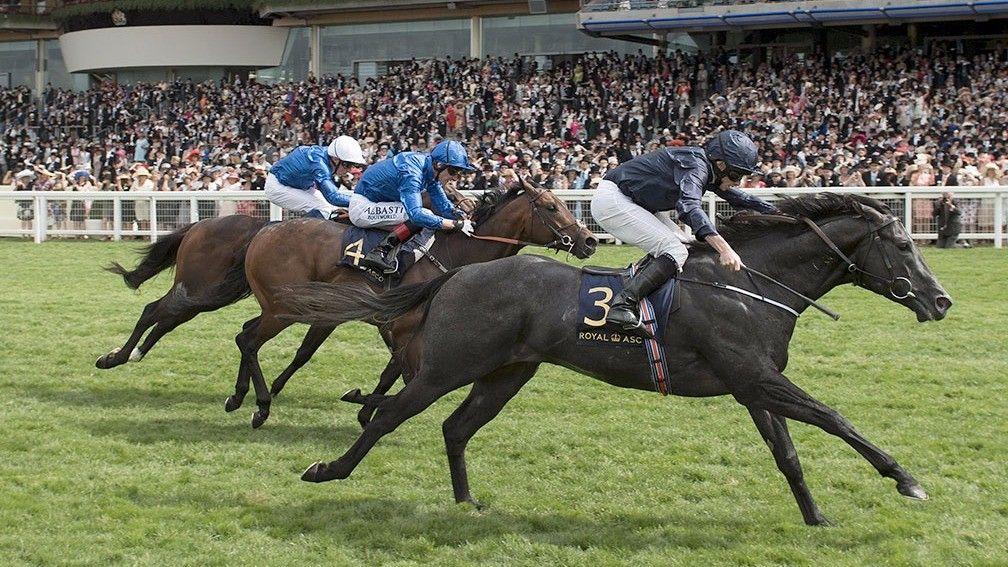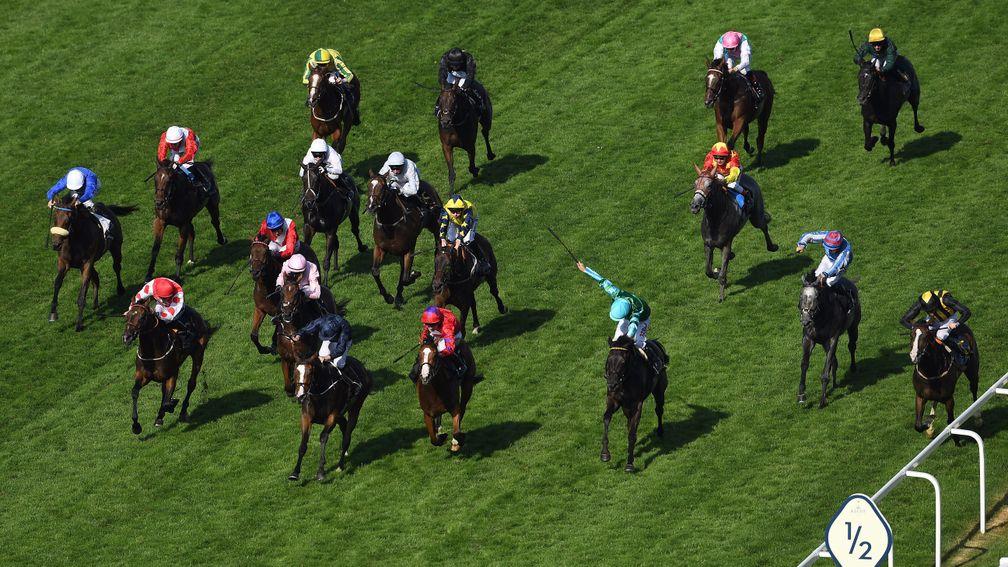Consistently excellent Coventry deserves upgrade to Group 1

Can the best Flat meeting of the season be made better still? Racing Post writers consider the evidence of the week and offer some suggestions
Bring back the Aussies
If there is one department in which Flat racing outshines its jumps sibling it is international competition.
From Dermot Weld's breakthrough Melbourne Cup triumph to Black Caviar's dramatic Diamond Jubilee Stakes victory and that Lester Piggott ride on Royal Academy in the Breeders' Cup Mile, there is something extra special about doing it away from home.
So officials must make sure that they net the biggest names from around the world. Easier said than done, granted, but jetsetting international recruiter Nick Smith already has Australia's best horse Winx at the top of his wishlist for 2018.
Smith should not, however, stop there. Since 2003 to last year, there has been at least one Australian runner at the meeting, but there were none last week.
The nation's leading trainer Chris Waller, who handles Winx, reckons prize-money down under means the trip is not as attractive as some may think. Whether there is enough money in Ascot's coffers to offer a juicy bonus for any horse who wins a Group 1 here and in Australia later in the year is unknown – one that would be open to horses such as Highland Reel or Caravaggio as well rather than just the raiders –is unknown.
What is known, however, is how hard it is for the best US sprinters to tackle their Australian counterparts and vice versa; there is no better – or easier with quarantine issues in mind - place than Ascot.
And even if our prize-money is not deemed up to scratch, surely stuffing the Poms in their own back yard is attractive enough.
James Burn
Change Chesham conditions
The clause requiring Chesham runners to be by a stallion who won over a mile and a quarter or more is pretty much a one-off in the racing programme.
It made some sense in the days when the race was run over six furlongs – when without it there would have been no realistic opportunity for more stoutly bred two-year-olds to shine at the meeting – but the distance was increased to seven furlongs in 1996 and the benefits are now debatable.
Saturday's winner September might turn out to be a star, but if she does she will join only Maybe and Churchill among the 22 who have followed World Premier, the Shareef Dancer colt who won the last six-furlong running.
Surely it could only enhance the contest if it was open to juveniles by stallions who are influences for stamina yet for a variety of reasons never won over as far as a mile and a quarter.
Cape Cross is the obvious example. While it's very unlikely Golden Horn, Ouija Board or Sea The Stars would have been considered for the race even if it had been open to them, there are plenty of others who would have been, and there are other stallions in the same boat.
The Norfolk Stakes has been brilliant at identifying the fastest juveniles and the Coventry does a superb job highlighting those who go on to excel at around a mile. Put the Chesham on a similar footing by opening it up and upgrading it.
Graham Dench

Sectional timing has become paramount
If Ascot wants to compare itself to the best racing events around the world it needs sectional timing. It would be laughable for any meeting in most other racing jurisdictions to be run without it.
Time is important. Ascot have a great big digital clock beaming out the race time right behind the winning post, so cannot pretend it is information they do not value. On day one, when track records were being broken left, right and centre, everyone was interested in times.
But vastly more important than the overall time is how that time was achieved. Where was the pace applied, when, how hard, for how long? This is what makes a race play out the way it does. This is why certain horses win races we think beforehand that perhaps they cannot, or should not.
Pace is the single biggest factor on any given race. Watch athletics, cycling, or even skeleton bob and time and sectionals are of great importance. At Royal Ascot we are left to guess just exactly how Ryan Moore managed to repel all-comers on Highland Reel, or mow down Harry Angel and Blue Point with Caravaggio. Did the two Godolphin horses go too fast? Probably, maybe, we don’t know.
The technology exists and it should be in use. Instead of racecourses and television companies engaging in brinkmanship over who foots the bill they need to do what is right for the viewer - and any information that provides illumination has to be in the viewer’s interest.
Stuart Riley

High time Coventry became a Group 1
The proliferation of black type races, and the upgrading of some contests that have not proved worthy of a boost, has been a hot-button issue in Flat racing over the past few years.
However, surely the Coventry is ripe for upgrading to a Group 1 after another fantastic edition this year, won by a horse with tremendous potential in Rajasinghe.
There are no two-year-old Group 1s in Britain before Future Champions Day at Newmarket, no Group 1s in Ireland before the Phoenix Stakes on August 13 and none in France before the Prix Morny on August 20. It must be time for a change.
The likes of Caravaggio, Canford Cliffs and Dawn Approach have won the race in recent years, surely horses worthy of being Group 1 Royal Ascot winners?
With the Commonwealth Cup and the three-year-old sprinting programme boosted so significantly in the past three years, upgrading the Coventry would filter into the pathway of recognising the best sprinters in training.
There could also perhaps be the added benefit of persuading more connections of sprinting two-year-olds to stay in training instead of going to stud. After all, if you have triumphed in a Group 1 over course and distance as a two-year-old, surely it makes sense to try again at three?
Peter Scargill
Timekeeping needs to improve
Among the list of brands to have partnered up with Ascot in recent years is Swiss watchmaker Longines, who are the official timekeepers of races at the famous venue. Perhaps the company could provide bosses at the course with a few of their delightful timepieces as there seems to be a big issue with getting the races to start at the advertised off time.
During the five days of the meeting only three of the 30 races started within a minute of their advertised off time, a remarkable fact for a festival of racing that prides itself on being the best of the best. Indeed, not once did the opening race go off on time, which is quite hard to fathom.
Of course, there is the not insignificant matter of the royal procession to get out of the way before racing can begin, but if 35 minutes is not enough time for that, why not either move the first race back a few minutes or ask the Queen and her friends and family if they would mind getting to the course a little earlier?
Wednesday was the the worst offending day with the Jersey Stakes kicking things off six minutes behind time and the concluding Sandringham going off a whopping nine minutes late.
It may seem like a minor gripe in the grand scheme of things, but for betting purposes races going off on time is very important, to say nothing of the fact that casual viewers may find having to wait five minutes longer than advertised for a race to start more than a little tiresome.
Mark Scully

Published on 25 June 2017inBritain
Last updated 20:04, 25 June 2017
- 'We feel he's coming to his peak' - Fergal O'Brien appoints Johnny Burke as new stable jockey
- 'I don't think I've seen a horse work better' - Karl Burke issues bullish update on 2,000 Guineas contender Night Raider
- Who remains in contention for the 2,000 and 1,000 Guineas at Newmarket this weekend?
- Trueshan declared for Sagaro return at Ascot on Wednesday - but Alan King thinks a 'personal best' is required
- Racing has a rich history - it's time to breathe a bit of life and vision into highlighting it
- 'We feel he's coming to his peak' - Fergal O'Brien appoints Johnny Burke as new stable jockey
- 'I don't think I've seen a horse work better' - Karl Burke issues bullish update on 2,000 Guineas contender Night Raider
- Who remains in contention for the 2,000 and 1,000 Guineas at Newmarket this weekend?
- Trueshan declared for Sagaro return at Ascot on Wednesday - but Alan King thinks a 'personal best' is required
- Racing has a rich history - it's time to breathe a bit of life and vision into highlighting it